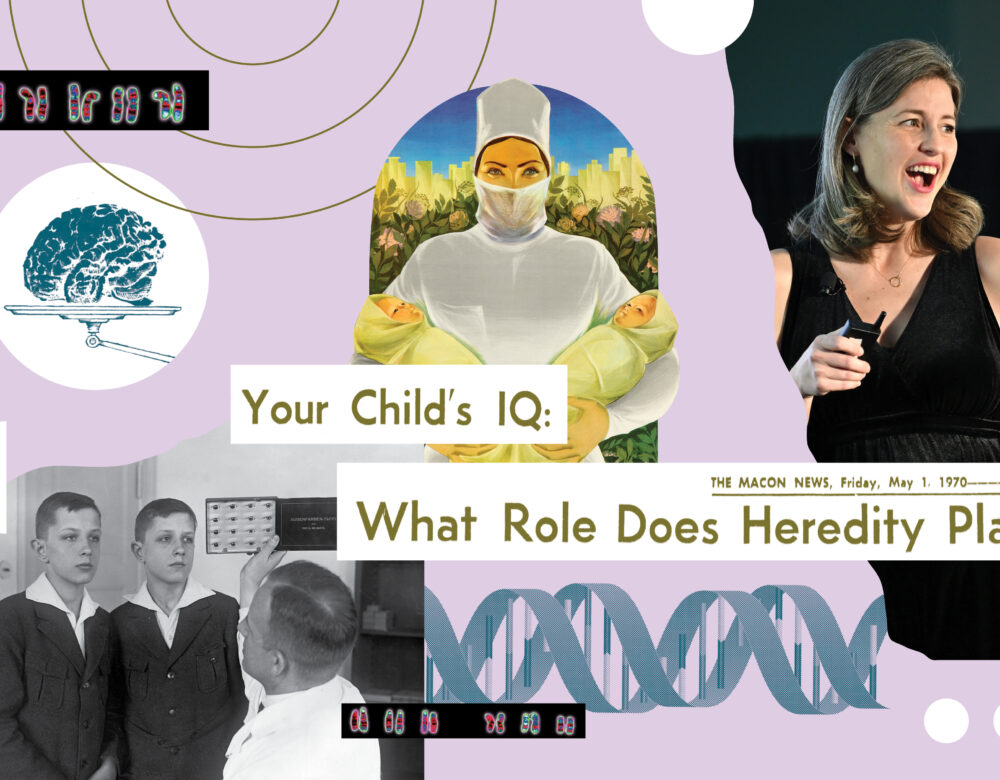In fall 2021 psychologist Kathryn Paige Harden seemed poised for celebrity—at least the subdued kind reserved for public intellectuals. A New Yorker profile reflected on her rise:
A burst of media attention followed, set off by the evocative questions Harden raised in her new book, The Genetic Lottery. The attention affirmed Harden as the latest standard-bearer of a scientific field called behavior genetics.
Behavior genetics attempts to parse the competing influence of heredity and environment—nature and nurture—in shaping the course of our lives. Its studies are often the basis of beguiling stories that offer answers for why spouses cheat and pets are loyal. (“How Genes Drive Your Dog’s Lovable and Wacky Behavior,” Gizmodo barked in 2022.)
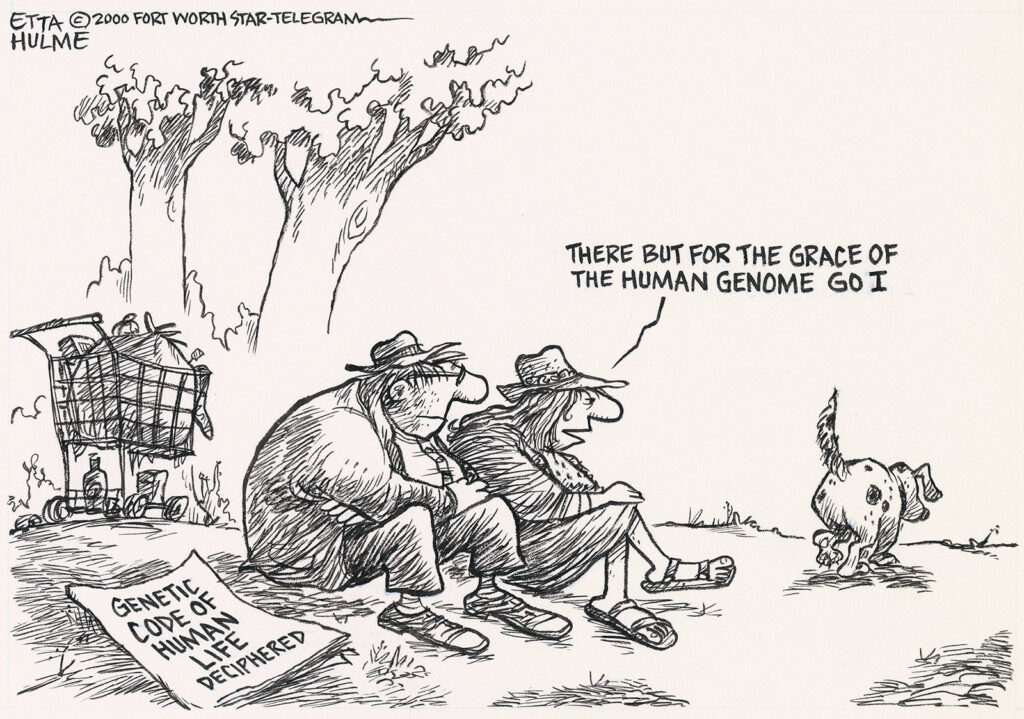
Since the early 2000s, behavior geneticists have looked for these answers using large-scale statistical analyses, known as genome-wide association studies. Algorithms comb through thousands, even millions, of genomes to identify genetic variations that appear to overlap with certain behaviors. As these patterns emerge, the scientists believe they are isolating genetic markers for people who are more or less likely to do well in school, get rich, or have a lot of friends. Other markers, they say, point to a greater likelihood of substance abuse, imprisonment, or schizophrenia.
The Genetic Lottery is unique in that it promotes behavior genetics as a vehicle of progressive political change. In the book, Harden argues for social policies that account for genetic differences. Much of her goal, she says, is to reclaim her field from people such as Charles Murray and Richard Herrnstein, whose infamous 1994 book, The Bell Curve, used the field’s methodologies to argue the opposite: that racial differences in social performance are cemented in our genes, and therefore government interventions meant to level the playing field are doomed to fail.
Murray and Herrnstein are just two of the many race scientists who have exploited the field’s tools to pose fraught questions: What do our genes say about us? and even, Who has the best genes? Eugenicists tied intelligence, criminality, and mental disorder to inheritance and were especially fixated on correlating these traits with race and ethnicity. Revulsion at the horrors of Nazi science temporarily froze these inquiries in the years after World War II, but it wasn’t long before race scientists began raising them again. Despite reform attempts and protests, race scientists have found a home in behavior genetics ever since.
Harden, mindful of this history, anticipates critics on her left who would say studying genetics and acknowledging its importance to social outcomes is a slippery slope to eugenics. In fact, she considers her framework actively anti-eugenics.
“The anti-eugenic policy,” she said on The Psychology Podcast, “is one that guarantees equality of freedoms, resources, and welfare regardless of the outcome of the genetic lottery.”
She characterizes this lottery as a “systemic force that matters for who gets more, and who gets less, of nearly everything we care about in society.” And so she prods her readers to contend with what she says is scientific reality: genetic makeup contributes to this unequal system, and progressives need to face up to that fact before the political right weaponizes it.
By and large, liberal media assented to Harden’s premise. WBUR suggested Harden was ushering in a “new moral framework for genetics.”
But several months after The Genetic Lottery was released, reaction began to shift. Scientific reviewers were more pointed in their criticism of the book. Historians also began scrutinizing it. Many critics on the far left still weren’t buying her pitch.
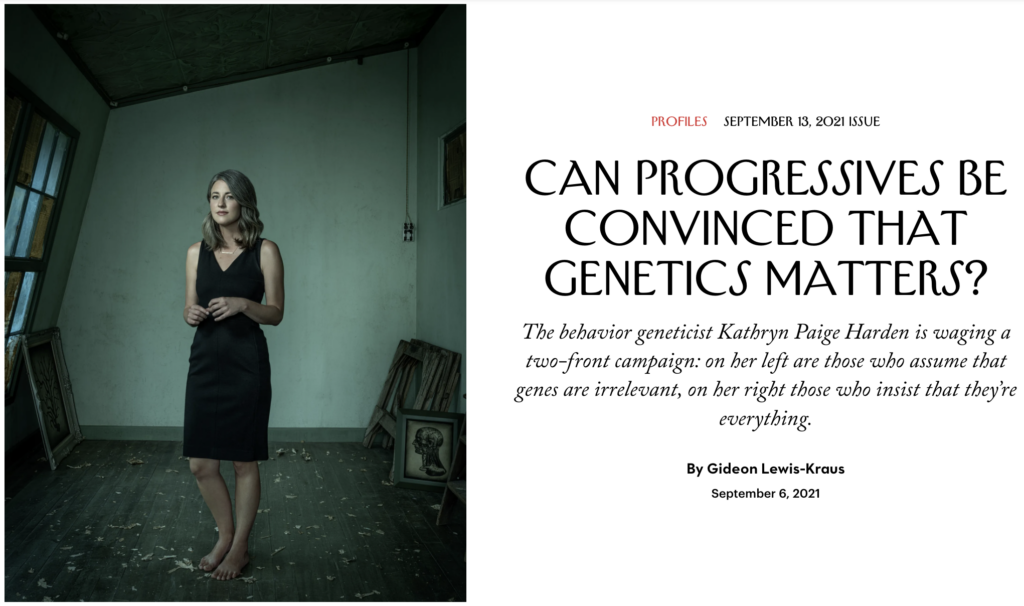
As criticism mounted, Harden became embroiled in a controversy. A piece in the New York Review of Books mentioned her critically and connected her with a growing scandal involving recently deceased American biologist E. O. Wilson and his ties to race science.
“While authors like Herrnstein and Murray have been shunned for the fairly openly racist social policies they promoted, Wilson has remained a safe authority for such contemporary hereditarian participants in this debate as Steven Pinker, Robert Plomin, and Kathryn Paige Harden,” historians Mark Borrello and David Sepkoski wrote. “Rather than taking Wilson’s death as an opportunity to interrogate that authority, many of his fellow scientists have chosen a kind of sainthood for him instead of a frank examination.”
“Interesting piece . . .” Harden responded on Twitter, “but I find mention of me as a ‘hereditarian’ who has used Wilson as a ‘safe authority’ a bit confusing—as I don’t identify as a hereditarian (as typically defined) nor have I ever cited Wilson?”
Harden describes herself as an anti-racist who is salvaging behavior genetics from its racist lineage. So why, she was asking publicly, am I getting dragged into this mess?
Harden may have protested, but in fact behavior genetics today focuses almost exclusively on heritability.
Imagine a pair of fraternal twins. They share the same parents and childhood home. As they grow older, the siblings’ social outcomes begin to differ. One earns a PhD in economics; the other drops out of college. One develops a dependence on alcohol; the other drinks occasionally without incident.
Behavior genetics looks for genetic markers to explain these differences rather than examine the twins’ life experiences for clues. The field especially wants to know how much genes matter. How much of human variation in traits such as educational attainment, a very common proxy for IQ within the field, can be attributed to genes.
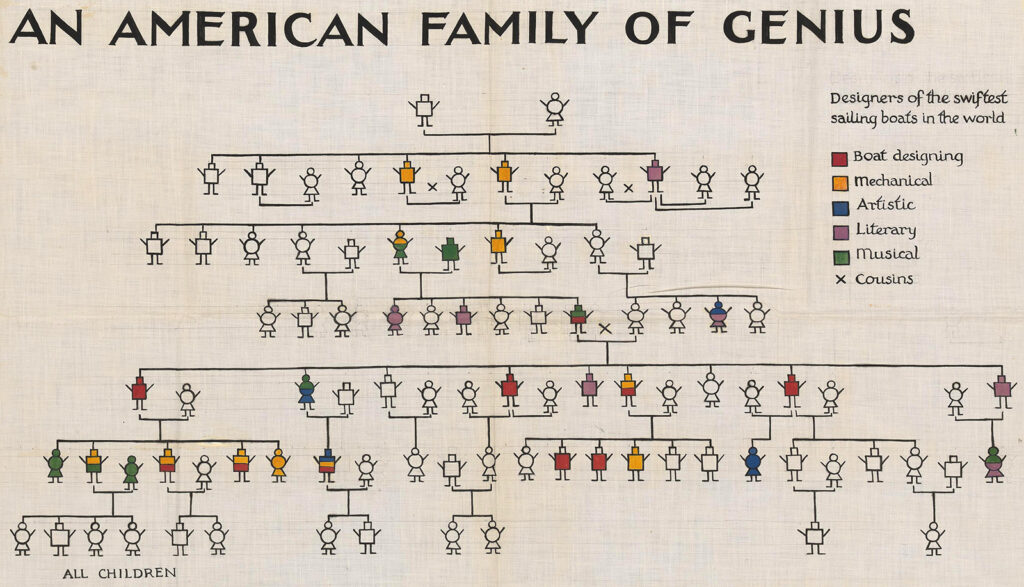
Harden doesn’t discount the role of environmental factors in the outcomes she studies, but in keeping with the field, her research focuses almost exclusively on how much questions.
It hasn’t always been this way. When sociologist Aaron Panofsky started researching behavior genetics’ origins for a dissertation that eventually became his book, Misbehaving Science, he was surprised to learn that hereditarianism was, if not a sordid concept, a suspect one to many early members when the field emerged in the 1950s.
“This was a postwar scientific movement that was really trying to recuperate and recover genetics from the legacy of the Nazis,” he said. “The young generation of scientists in that field were very chastened by the uses and misuses of genetics for eugenic purposes.”
In its early days the field attracted scientists from a wide array of disciplines. Under this big tent were fruit fly researchers, comparative ethologists who studied the differences in how dogs and monkeys were domesticated, psychologists administering pencil and paper tests and doing twin studies, and comparative anthropologists studying patterns of behavior in different populations. These researchers used different methodological approaches, studied different organisms, and followed radically different lines of inquiry. What bound them together was an interest in understanding how the behaviors of animals interacted with genes.
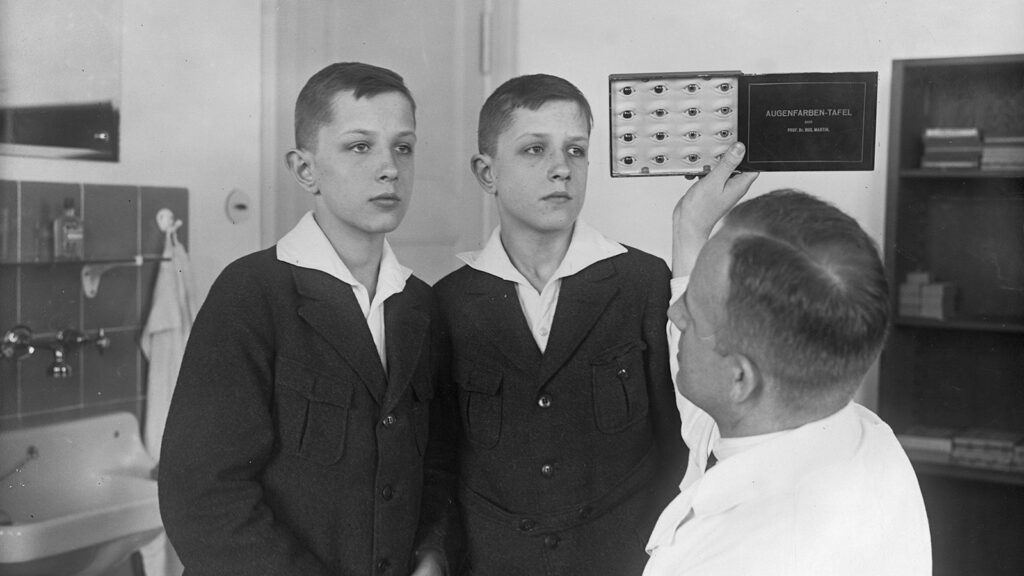
“They all thought that behavior was important, they all thought that biology was important, and there were lots of different ways of articulating those relationships,” Panofsky said. They were looking for ways to study the relationship between biology and behavior that didn’t focus narrowly on thorny how much questions of inheritance—studies that contributed to the dark turn genetics took with the Nazis.
One scientist in the big tent was Jerry Hirsch, a fruit fly researcher who had studied under Theodosius Dobzhansky, the Ukrainian American geneticist often credited with providing lab evidence for natural selection. Hirsh was attempting to breed flies that would move in uniform ways toward or away from stimuli such as light (phototaxis) and gravity (geotaxis). He was a proponent of how questions—what genes, specifically, could he isolate and breed for to cause the different stimuli responses, and what physiological mechanism made them happen.
Hirsch was also among the most stalwart skeptics of how much questions. He said that while heritability could be used as an initial step in research, he couldn’t “seriously consider heritability to be ‘one of the central concepts of modern genetics.’ ”
Many researchers shared Hirsch’s sentiment, and heritability estimations were given much less attention than they are today, Panofsky said. The same can be said for the study of racial difference. Members generally agreed that racial research was scientifically intractable and socially destructive and had no place in the field.
But a single academic article, one Panofsky likens to a Molotov cocktail, set fire to that consensus and changed behavior genetics for good.
In 1969, psychologist Arthur Jensen published “How Much Can We Boost IQ and Scholastic Achievement?” in the Harvard Educational Review. His subtitle may as well have been “None—So Let’s Not Bother Trying.” It was among the most controversial psychology articles ever published and softened the ground for a public debate on the connection between race and IQ.
In the paper Jensen claimed to prove compensatory educational programs, such as Head Start programs that put poor and underserved children in preschool programs to improve their performance in grade school, would not work because genetic studies showed IQ is about 80% heritable. He proceeded to argue that efforts to explain an average 15% IQ gap between Black and white groups could not be explained by environmental factors because, according to Jensen, controlling for income and school quality narrowed but did not close the gap.
“There is no way to discriminate or distinguish between the average ten-year-old black and the average 8½-year-old white,” Jensen said to Time in 1979. “The tests look the same, but the black child has a lower mental age. It looks more like a developmental lag than a cultural difference.”

The public reaction to Jensen was fierce. “He was burned in effigy on some college campuses and received death threats; for a time, he was accompanied by bodyguards,” the New York Times later recounted.
The science itself is extremely sketchy—full of leaps and inference. In this regard, there’s intellectual continuity between Jensen and his contemporary William Shockley, a Stanford University physicist and notorious racist, as well as Murray and Herrnstein in the 1990s. All were particularly good at distracting from their work’s scientific shortcomings and leveraging their institutional status to force conversations about innate racial difference to happen in the first place. Consideration was given to these scientists’ bogus findings under the guise of reasonable disagreement and scientific freedom. Let all ideas come up for air, the thinking went, and the bad ones will be killed in peer review.
Such professional courtesy was misplaced. It would later be revealed that Jensen served on the editorial board of Neue Anthropologie, a German neo-Nazi journal that actively sought to revive racial hygiene science. He also was taking money from the Pioneer Fund, a foundation backed by Wickliffe Draper, a hardline segregationist who plowed his inherited fortune into keeping eugenics alive through the postwar backlash.
Jensen did what Pioneer Fund stars were all supposed to do—he thrust questions about white racial superiority (and Black inferiority) into the spotlight via the press, manufacturing a debate over race and IQ. In the process, he forced the field of behavior genetics to respond to his assertions.
His article “drew from all parts of the field conceptually,” Panofsky said, including mouse and ethological research as well as twin and paper-and-pencil IQ studies.
The confrontation fractured the field. Many scientists chose to leave. Some, primarily animal behavior geneticists such as Hirsch point blank wanted to shun Jensen for his obvious political motivations and the dubiousness of his science. But a third group of researchers wanted to find compromise, an “arm’s length embrace” of the claims Jensen was making about race and IQ, as Panofsky described it.
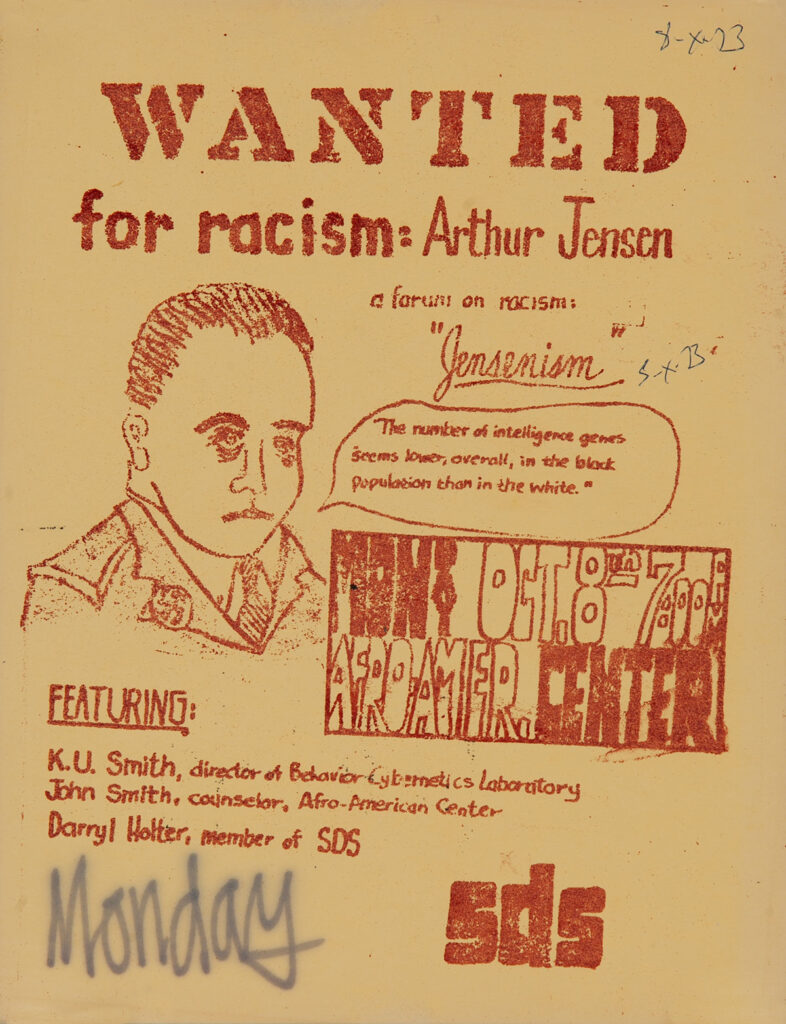
The debate intensified, and more researchers left. For them, behavior science had become synonymous with race science. Internal dissidents such as Hirsch became farther and fewer between and were steadily shut out by those occupying the “reasonable” middle ground. Once of marginal concern, heritability estimation became a central preoccupation of the field.
By the mid-1970s, Jensen’s ideas had interspersed into the field, which had become a “weird trading zone of quasi-eugenics people and people who tolerated that stuff,” said Panofsky. Behavior genetics was in a spot where it needed to derive its legitimacy through other means, relying on its relative notoriety and ability to generate headlines with flashy, often controversial associations.
“It has taken the heel turn,” Panofsky said. “You know, in wrestling when someone just becomes the heel, and then he’s the guy that everyone loves to hate.”
The fractured field still had an audience for its material, but it had become wholly dependent on controversy to hold people’s attention. Which made it confounding when a well-respected scientist like E. O. Wilson stepped into the fray.
E. O. Wilson made his name by carefully studying the social behavior of ants in the wild. He discovered how certain chemicals mediated social behavior among ants—mass foraging, recruitment in moving the colony, grooming, and so on.
In 1975 Wilson published Sociobiology: The New Synthesis. The idea behind Sociobiology is this: genes for all social behaviors exist, and they have spread through natural selection. In the first 26 chapters Wilson lays out evidence for genes’ influence on animals’ social behavior. In the final chapter, he applied those ideas to humans.
The chapter on humans pans widely, describing all sorts of social variation—marriage, size and structure of society, values and ethics. And it suggests that variations among groups “might provide clues to underlying genetic differences.”
As the New York Times wrote in 1986, Wilson was willing to theorize a genetic basis for “female coyness, altruism, fear of snakes, fear of strangers, tensions and hostilities in large populations, the aversion to incest, warfare, competition, homosexuality, a feeling for the sacred, and a susceptibility to indoctrination.”

These theories sparked a firestorm. Some of the harshest criticism came from within Wilson’s own department at Harvard University. Richard Lewontin and Stephen Jay Gould were evolutionary biologists whose own research and political leanings inclined them toward skepticism of biological determinism—a one-way, causal relationship between genes and behavior. Lewontin and Gould were among a group of Boston intellectuals who signed a letter in the New York Review of Books denouncing sociobiology and placing it in an ideological lineage with the work of Jensen, Shockley, and other race scientists.
“The reason for the survival of these recurrent determinist theories is that they consistently tend to provide a genetic justification of the status quo and of existing privileges for certain groups according to class, race or sex,” the letter read. “These theories provided an important basis for the enactment of sterilization laws and restrictive immigration laws by the United States between 1910 and 1930 and also for the eugenics policies which led to the establishment of gas chambers in Nazi Germany.”
Wilson was furious and accused his colleagues of trampling on scientific objectivity for political ends. Wilson dismissed extreme notions of genetic determinism, with individual genes dictating individual behaviors like on-off switches. Instead, he suggested that a pool of genes “program” an array of potential behaviors in individuals.
And yet, there was no explanation of the how in his research. Critics accused him of scientific “sleights of hand” and “a leap of faith from what might be to ‘what is’.”
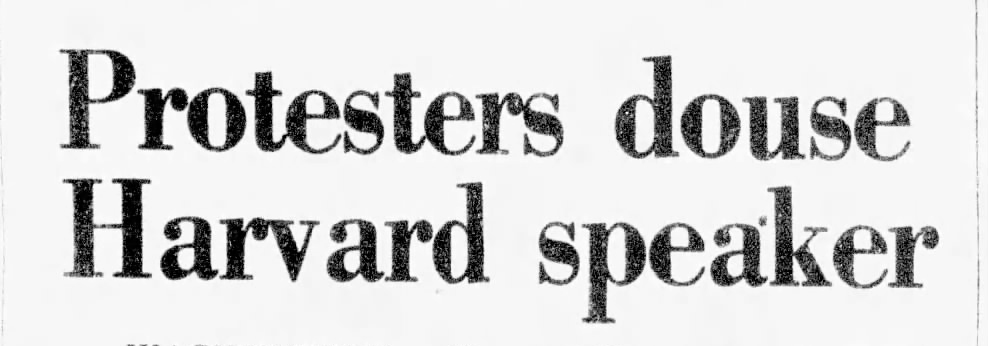
In a 1977 BBC documentary on sociobiology Wilson suggested that evolutionary analysis might eventually help explain humans’ “gut feelings about what is right and what is wrong.” Lewontin argued that the premise of the questions Wilson posed were faulty. Many of the behaviors Wilson identified are socially and culturally defined, not physiological responses to stimuli. As Lewontin explained,
While sociobiology’s ideas flew in the face of Lewontin’s politics, they also ran aground of his scientific findings.

People looking to dispel race as a biological construct often turn to Lewontin’s work. In a groundbreaking 1972 article, “The Apportionment of Human Diversity,” he used blood type variation to prove most of human genetic diversity (86%, more or less) exists within so-called racial groups. He found 7% or 8% of the difference, give or take, can be attributed to variation between linguistic clusters within a racial group (say, between Portuguese and Russian speakers), and the remaining 6% or 7% exists between races.
Scholar Dorothy Roberts uses a neat visual to relay these findings in her book Fatal Invention. Take a Black Baptist church and a white Lutheran church. Then take two unrelated people within either of the churches and compare their genetic makeup. There will be millions of genetic differences between these individuals—far more genetic diversity than the collective congregations will have between one another.
In a 2000 reprint of Sociobiology, Wilson harkened back to the reactions that greeted his book. “It ignited the most tumultuous academic controversy of the 1970s,” he wrote, “one that spilled out of biology and into the social sciences and humanities.”
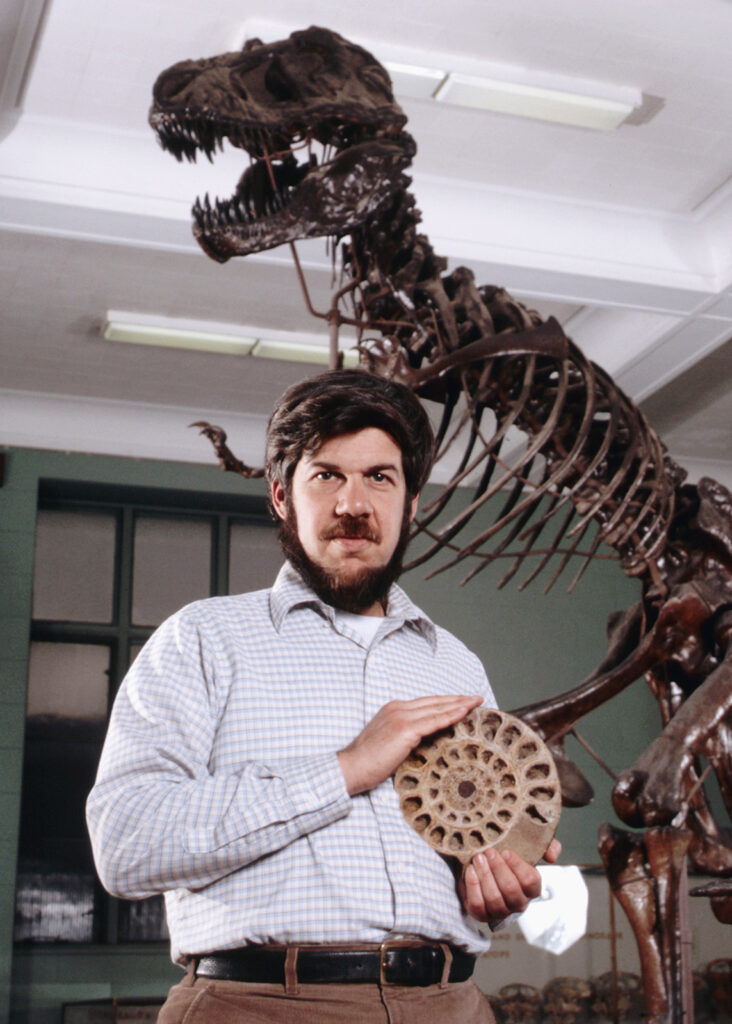
Ink was shed in the New York Times, the New York Review of Books, and Science for the People in stories covering the debate and the protests surrounding it, with both sides giving lengthy testimonial to their perspective. One colleague characterized Wilson as an “intellectual grenade thrower.” Wilson called Gould a squid who “escapes in a cloud of ink” when challenged. In one memorable incident, activists hijacked one of Wilson’s talks and dumped water on his head.
Though it may not have been intentional, the controversy stirred up old debates about the role of inheritance in ability and success and whether the social order had a biological foundation. Wilson’s mild-mannered gentility and stature in science made the topics palatable for many members of the press and public who would have been put off by unapologetic racists like William Shockley.
The sociobiology controversy eventually cooled, and Wilson returned to his roots. He earned a Pulitzer Prize for General Nonfiction in 1991 for The Ants. He also leaned further into the study and defense of biodiversity.
When he died in 2021—five months after his antagonist Lewontin—he was widely eulogized, remembered as a “genial naturalist” with a warm, paternal air and a mind to rival Darwin’s. Obituaries framed the sociobiology controversy as a mark of Wilson’s intellectual fearlessness or, at worst, a misstep driven by intense curiosity.
One of the few critical voices came from Monica McLemore, a scholar of reproductive health and justice. In an essay for Scientific American, McLemore challenged the scientific community to think critically about Wilson’s legacy. She wrote,
Wilson’s supporters could not abide how McLemore associated Wilson with eugenicists Francis Galton, Karl Pearson, and other scientists who promoted “theories fraught with racist ideas about distributions of health and illness.” Backlash came from members of the scientific establishment and the political far right, some of whom joined forces to rebuke McLemore and Scientific American in an open letter.
McLemore distanced herself from the controversy. But the public vitriol she faced soon spurred two groups of scholars, unaware of each other, to publish new discoveries they had uncovered about Wilson.
The embers of controversy were stoked yet again.
Stacy Farina was introduced to E. O. Wilson’s work while an undergrad at the University of New Hampshire. She read Naturalist, one of his most acclaimed works, and found it inspiring. It impressed on her the importance of being active as a scientist, going out into the natural world and making observations, to “have that be a basis of biology.”
Farina went on to earn a doctorate in evolutionary biology from Cornell University and now teaches biology at Howard University. Her husband, Matthew Gibbons, works in public health.
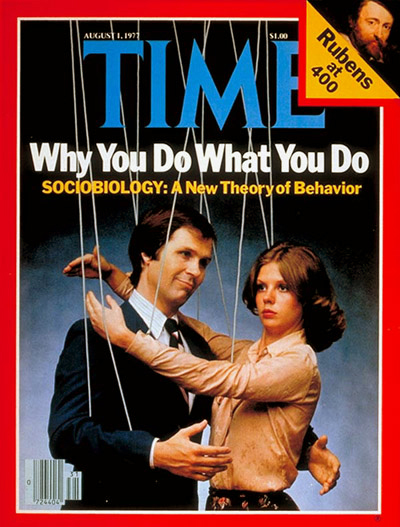
When Farina and Gibbons read Sociobiology, they were shocked by the concluding chapter. “It really gave me the feeling of having been naïve about what Wilson’s ideas could lead to,” Farina said. “I felt that I had personally missed that implication.”
That summer Stacy had an opportunity to do archival research at the Library of Congress. On a whim, she pulled Wilson’s files—she found four folders devoted to correspondence with J. Philippe Rushton, a Canadian psychologist and dyed-in-the-wool eugenicist.
“That was a huge red flag,” Farina said, “in the sense that anybody who knows anything about the history of scientific racism in the ’80s and ’90s will see Rushton’s name and think, ‘Wow, there’s got to be something interesting in there.’ ”
Rushton led the Pioneer Fund from 2002 until his death in 2012. He’s most infamous for spurious research that concludes brain size and genital size are inversely related—that Black people have “larger genitals, breasts, and buttocks,” and therefore are less intelligent than white people. The Southern Poverty Law Center identified him as a white nationalist.
Farina discovered that Wilson had maintained a correspondence with Rushton from 1978 to 1995. Rushton first approached Wilson because he was interested in a peculiar application of Wilson’s r/K selection theory—an idea that some animals have a genetic adaptation that makes them have many offspring that are not nurtured (the ant, the fish, the mouse) while others adapt to have fewer offspring that are more well-cared for (the wolf, the eagle, the human being). Rushton was interested in applying the theory to the human races and wanted to discuss it with Wilson.

Wilson was intrigued by Rushton’s work but demurred when Rushton asked him to sponsor it for publication in the Proceedings of the National Academy of Sciences. Wilson’s concerns were not the substance of the research, he made clear, but the political ramifications of being associated with it.
“He specifically talks about Gould and Lewontin,” Farina said of the correspondence, “and he says that they would use any excuse to raise the charge again, the charge of Wilson’s racism.”
But Wilson did “referee” the article behind the scenes. He unsuccessfully lobbied the journal Ethology and Sociobiology, writing,
Later, when Rushton was engulfed in scandal for his racist views and up for censure from his Canadian university, Wilson wrote a private letter supporting him, arguing that his interpretations were “sound, being adapted in a straightforward way from well documented principles of r-K selection in biology.”

It seemed like more than a casual correspondence to Farina and Gibbons. From their point of view, Wilson acted like a mentor to Rushton and provided him access to the scientific establishment. Historians Dave Sepkoski and Mark Borrello, who independently found the letters while researching a book about the history of biological determinism, had a similar impression.
In February 2022, Farina and Gibbons published their findings in Science for the People. A week later Sepkoski and Borrello published their piece in the New York Review of Books, the one that implicated Kathryn Paige Harden as a modern hereditarian.
Harden maintained that she shouldn’t be implicated because she never cites Wilson. She distanced herself methodologically and ideologically, claiming that The Genetic Lottery ushered in a new framework, equipped with new technology, to establish genes as causally related to outcomes—but in a socially responsible way.
The human genome is almost the same in every person. You can think of it as a long string of code written in the four nucleotides that make up DNA—A, T, C, and G. You may have a stretch of DNA that’s identical to most people except for one letter. That change in letters may create a different trait. For instance, it may make it so that your body does not correctly produce hemoglobin, the protein that carries oxygen, as is the case with sickle cell disease. If enough people carry that same variation in code, it is called a single nucleotide polymorphism, or SNP for short.
Take a thousand, or even a million, human genomes and study the SNPs. Then try to find correlations between those variations and different behaviors. To take an extremely simplified example, find people with an A rather than a G at one specific point on the genome and compare their high school graduation rates against the main group. Now you have a sense of what behavior genetics researchers are doing.

An extension of this technology is the polygenic score. Polygenic scores effectively take these studies and turn them into a set of behavioral odds. It’s a number that, as Harden said during an interview with WBUR, “can predict which math class you get tracked into high school, your likelihood of graduating from college,” and even “family income.” (Harden’s team did not respond to our requests for an interview.)
“They look over thousands of genes,” said Jessica Riskin, a historian of science at Stanford University, “and their claim is they find tiny correlations over thousands of genes and if you add these all together, you get an overall score.”
But these new tools have not brought new ideas to behavior genetics. The questions researchers ask today ultimately haven’t changed much from Wilson’s hypothesis that “pools” of genes work together to dictate certain behaviors.
For that reason the field’s relevance is still largely dependent on media visibility and controversial assertions—like genes can predict family income—that set off a predictable cycle. Critics take the bait and oppose the work on political grounds, and scientists call foul.
Harden nods to this dynamic in The Genetic Lottery when she connects an “uncontroversial premise”—siblings who grew up in the same household and share 50% of their DNA are apt subjects for studying genetic difference—to a “highly controversial one”—differences in educational attainment or other measured markers of well-being between these two siblings prove genes are causing the difference. The premise is so scientifically flimsy that it seems intentionally designed to invite protest and questions of motive.
There are many critiques to be made of the science, but most fall under the category of “correlation is not causation.” When scientists use correlation to estimate heritability, they still have no concept of how the gene (or cluster of genes) is functioning and if, indeed, it has anything to do with the outcome in question.
Panofsky explains this concept through the example of skiing ability, a skill behavior geneticists refer to often.
A behavior geneticist might compare the genes of a group of good skiers and a group of bad skiers to find SNPs. But identifying SNPs between these groups does not establish a causal link with ability, and it ignores other potential differences between the populations.
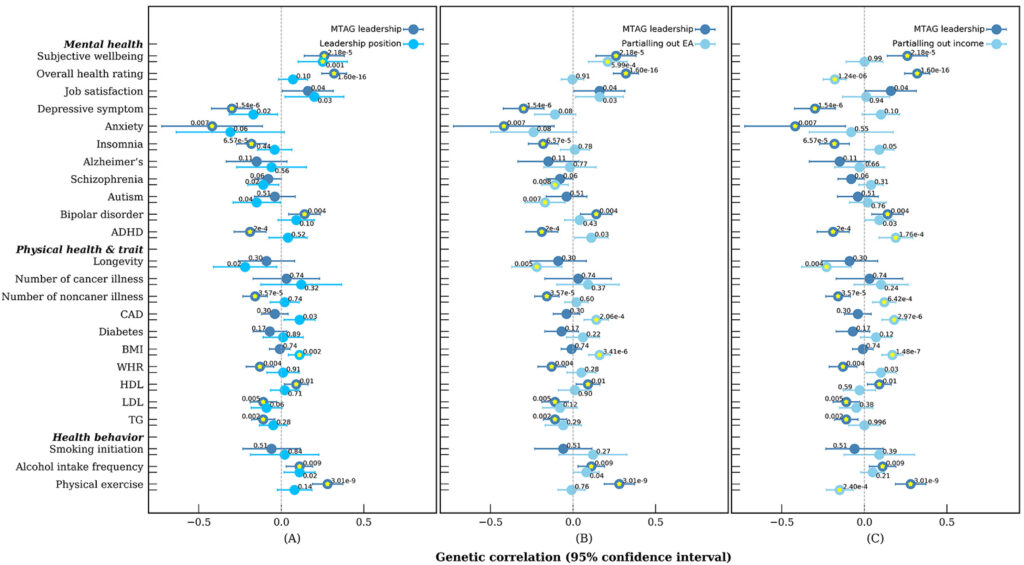
Not to mention the fact that “skiing ability” is not a behavior—it’s a complex aggregate of behaviors, including coordination, reflexes, and the ability to manage risk and fear in any given moment. Defining biology’s role in skiing success is far more complicated than breeding fruit flies that fly toward or away from light or identifying a single nucleotide polymorphism that causes a misproduction of hemoglobin that leads to sickle cell disease.
In response to this type of criticism, behavior geneticists point to the statistical significance of their findings. But a SNP study pulls from a massive data set, and it’s a well-known quirk of statistics that the larger a study gets, the more likely it is to demonstrate statistical significance that is, in fact, meaningless.
What’s more important, critics say, is a study’s clinical significance, and that’s where SNP studies often come up short. In The Genetic Lottery, Harden mentions a SNP she says makes a difference of two days’ worth of school in educational attainment. But how can anyone prove or disprove this particular gene change causes a person to stay in school for two days longer? “It’s really unthinkable what kind of causal mechanism you could be talking about here,” Riskin said.
The fact of the matter is scrutiny of behavior genetics should not be confined to questions of scientific rigor. It’s valid to ask whether anyone should engage in these lines of inquiry.
Stanford University geneticist Marcus Feldman has been pushing back against the field’s excesses as long as anyone. He collaborated with Lewontin to challenge Jensen’s assertions about race and heritability, and more recently co-authored a damning review of The Genetic Lottery with Riskin. And so when the first “polygenic risk score baby” was born, he immediately recognized the ethical pitfalls.
Polygenic risk scores attempt to measure an individual’s relative risk of developing certain diseases based on markers in the person’s genome. These scores may one day help people catch certain genetic diseases earlier, but some private companies are promising that screening for other markers, like IQ, is on the horizon.
For the baby in question, polygenic risk scores were combined with in vitro fertilization. The baby was selected as an embryo for implantation based on its likelihood to avoid heart disease, diabetes, and cancer in adulthood.
Some in the medical community have expressed concern about the implications of this genetic testing. The potential pitfalls of this type of trait selection seem obvious—a movement toward “optimized” humans and the creation of separate, genetically determined classes of people. For some it evoked a collective anxiety captured in the 1997 film Gattaca, where humans are tested and molded in utero to hold certain positions and certain benefits. Rather than downplay such fears, Feldman says some companies have leaned into the vision by suggesting that risk scores may be applied to educational attainment.

Where do Harden and The Genetic Lottery fit into what are, at least for now, imaginary concerns?
A lottery implies there are winners and losers—a hierarchy of ability. Harden claims that we must be honest in our assessments of these hierarchies and work to make a society that is equitable regardless of people’s ability. But the social policy she sketches out seems to dance pretty close to the world Gattaca portrays.
She calls for policies that work to close gaps in achievement between students who are allegedly genetically predisposed to struggle in school, but then remarks, “We can maintain that education is a good thing for people to acquire, however, without fetishizing higher education as the only pathway to building a healthy, secure, and satisfying life.”
In other words, we should work to build an equitable society where basic human needs are provided for, but also people should be encouraged to pursue certain types of lives based on their genetic abilities. While dissimilar in intention, her prescriptions sound remarkably similar to Jensen’s from decades before. Educational policy should reflect genetic difference, he said, by providing “a diversity of conditions suited to the diversity of individual abilities and needs of the pupil.”
It’s not hard to see how these ideas, especially when framed as a “lottery,” would be reinscribed into the social categories that already exist. As Riskin points out, though Harden acknowledges that race is socially constructed, she doubles back, saying that social categories of race correspond in some systematic way with genetic populations.

“Socially constructed race differences are systematically related to genetic ancestry,” Harden writes. And genetic ancestry connects to those outcomes she studies—educational attainment, income level, risk of homelessness.
“She has affirmed that separation between the scientific category of genetic population and the social category of race, but then she goes on to re-elide them,” Riskin said.
It may be the case that Harden wants to destigmatize the idea that people may be born with inherent limitations, that people’s circumstances are not their “fault” but just that—circumstance. But it’s hard to see how it would help marginalized groups like the unhoused to put their circumstances down to inherent genetic differences between them and those who are housed. And given the disproportionate representation of Black people in the unhoused population—13% of the U.S. population, but 40% of the unhoused—it’s easy to see how race as biology could be reconstructed.
Behavior genetics is caught in a cycle: It offers evocative questions that ultimately lead back to lines of inquiry that have never served society the way science should.
When it comes to understanding the differences between us, what is the utility of a question like how much?
When it comes to who we are and why, Lewontin argued that there’s no fixed line between the intrinsic and the extrinsic—the information that exists within our bodies and the environment that our bodies exist within.
Riskin brings up the metaphor of Yosemite National Park. If you try to understand the nature of the park by asking how much is the result of climate and how much is due to its landscape, you’re probably asking the wrong questions, because the climate of the park and the landscape of the park are not discrete, separate things.
“It’s not just that you could never figure it out because it’s so complicated,” Riskin said, “but that the question itself is undefined because these are not separate fixed things.” In other words, the climate and the landscape are constantly acting on and influencing one another.
The question that matters isn’t how much do genes make us who we are. It isn’t about coming up with a number to quantify it. Perhaps instead, the question is, can we be defined in these terms?
This article is part of Innate: How Science Invented the Myth of Race, a podcast and magazine project that explores the historical roots and persistent legacies of racism in American science and medicine. It is made possible in part by a major grant from the National Endowment for the Humanities: Democracy demands wisdom.

